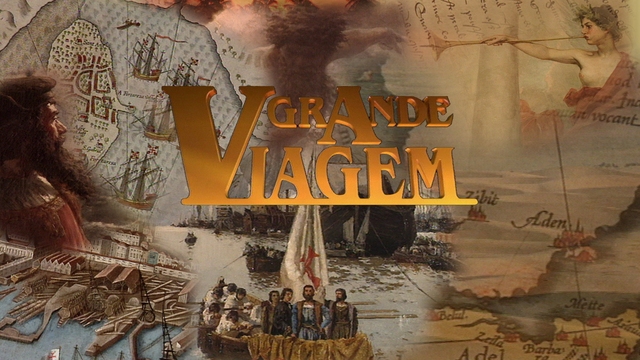Vasco da Gama's Voyage of Discovery
The stunning journey of a pioneering 14th-century Portuguese explorer
 A stunning epic re-tracing the steps of this Portuguese explorer’s intrepid voyage to India, which was borne out of a desire both to trade, and to spread the word of Christianity. From Mossel Bay to Mozambique, and finally to India, his fascination with Africa spawns baptisms, conversions, alliances of convenience. It was a voyage that would change the world into one trading village. Revisiting these Places, we offer a visual feast chronicling an amazing journey.
A stunning epic re-tracing the steps of this Portuguese explorer’s intrepid voyage to India, which was borne out of a desire both to trade, and to spread the word of Christianity. From Mossel Bay to Mozambique, and finally to India, his fascination with Africa spawns baptisms, conversions, alliances of convenience. It was a voyage that would change the world into one trading village. Revisiting these Places, we offer a visual feast chronicling an amazing journey.
15th century Portugal: a nation at the cutting edge of marine navigation with an insatiable appetite for imperial expansion. A nation in want of "a single man, around twenty years old" to lead the hunt "for Christians and spices". His task: to sail right around Africa and up to Calcutta, establishing trading posts wherever possible and convert Muslims to Christianity. Vasco da Gama, the man to take the mantle. The voyage was ready to begin..."into a sea of deepness and winds still to discover". The ships swarmed with shapes and symbols, pilots and seafarers, poets and soldiers, geographers and mathematicians. They searched "for new lands, islands, people, seas and anything else that there is".
We capture the essence of Vasco's legendary voyage through an anonymous account, almost a diary. Through it we absorb the mores of the time: the inhabitants of one coastal town “played the flute, in a very nice way for black people of whom music is not expected”. At times the arrogance of the Portuguese provoked battles with the Muslim natives, and Vasco’s men leave on bad terms. “Whilst we were in this creek we put up a cross.. which some of the black people knocked down when we left”. In Mozambique Vasco inquired about a certain Christian King, but the natives despise Christians, and another battle ensues. It is said that on another occasion “two men went to the King to confirm they came in peace... and the King sent the captain as many samples of cloves and pepper as they could carry”. Despite the offering “our people suspected betrayal”. The truth was just so. “That night two rafts loaded with men came to the ship Berrio and started cutting its chain cables.” The plot was discovered. The Arabs flee as the crew attack. They head north, towards Malindi...
It was with a friendly Arab pilot that the fleet finally reached Calcutta, using unfamiliar instruments and techniques. Here Vasco da Gama prayed in a temple. Would he have mistaken the statue of a Goddess with the Image of Our Lady? Or was his prayer simply a clever diplomatic gesture? There are Christians here, in the East! But would these people be able to unite with the King of Portugal against the Muslims? United by religious devotion, and the profits of commerce, the Muslims put up a front which collided with the interests of Lisbon. The Arab merchants held the monopoly on spices. The interference of the Portuguese was cause for confrontation during 1498.
In 1502 Vasco da Gama arrives once again in Calcutta, bringing weapons, soldiers and ships. He terrifies. Kills. Destroys. He has his revenge for the humiliations of the first trip. But the Samorim does not give in to the “diplomacy” of fire... In 1524 Vasco da Gama returns to India. He has on his mind to bring the sea of spices to order . He wants now to put an end to the “great thefts in the justice and the treasury of the King”. But his time ran out. Three months after his arrival, Vasco da Gama would die in Cochim. It was Christmas Eve. The impact of the Portuguese is prevalent in India today and Vasco himself has been honoured with memorials in many of the places he set down. But today those monuments have come off their pedestal, and Vasco stands by the side of dusty roads; forgotten.
It is true that his voyage marked the beginning of the colonial era in the Orient. But it is also true that the route past the Cape of Good Hope marked the beginning of the new “Sea Age”. Streaming between the Indian and Atlantic oceans, in both directions, was a new knowledge. And so earth became bigger and bigger... And isn’t that the real meaning of history?
Produced by SIC TV
FULL SYNOPSIS

